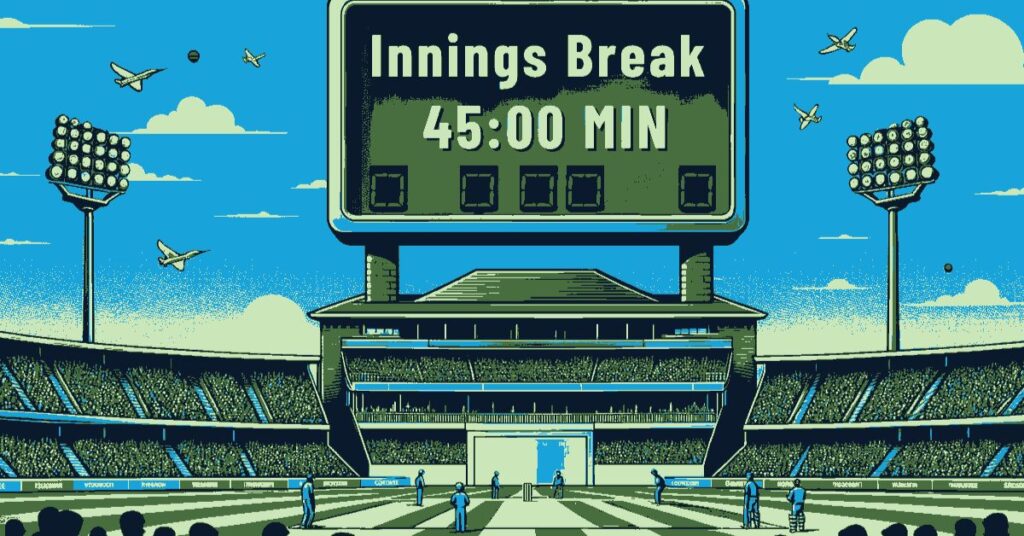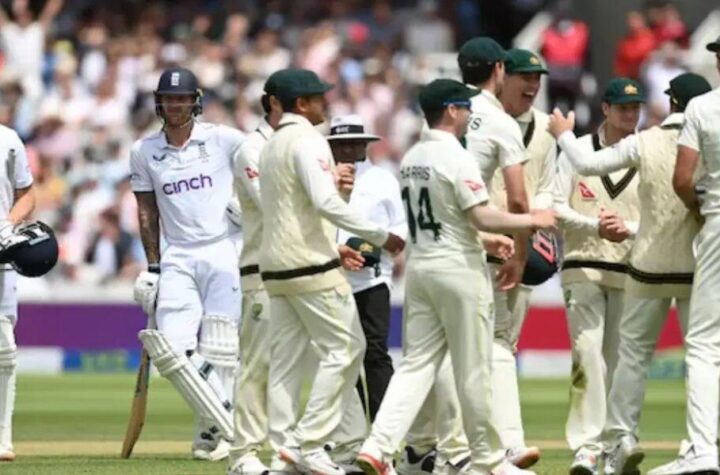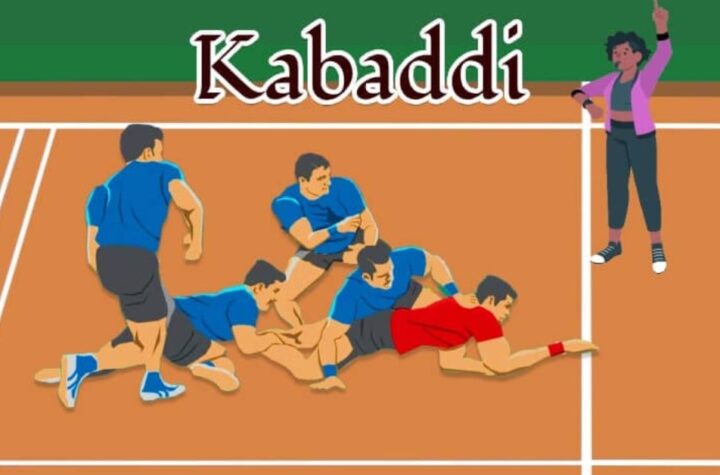
Innings break times vary depending on the length and weather conditions of a test match, with breaks serving to provide players with needed rest and strategic planning opportunities.
However, this time can be reduced significantly if an innings finishes near to its scheduled lunch or tea break, enabling play to end on time.
Also Read, Tea Break Time in Test Cricket
Innings Break Time In Test All you need to Know
During the break
Innings breaks are an integral component of cricket. They give both players and teams time to rest, eat, and strategize ahead of the next innings – though their duration will depend on factors like match format and weather conditions. Finding a balance between player recovery and maintaining an even pace during breaks is essential to the game’s flow.
In one-day international (ODI) matches, an innings break typically lasts 45 minutes; however, umpires can shorten this break to accommodate for unexpected delays in play – for instance if an innings loses up to 60 minutes of time then its break can be reduced by 30 minutes – this flexibility ensures the game ends on schedule and keeps fans satisfied.
Test matches offer teams a crucial moment of regrouping and planning during innings breaks – when captains, coaches and bowling sides come together to discuss opposition and pitch conditions as well as strategies to exploit those weaknesses and take advantage of what the pitch provides. Sometimes these strategic discussions have even turned the tide of games with many famous comebacks or collapses happening after tea! Furthermore, an innings break provides important psychological relief and recharge for its participants, providing time to recharge mental energies before continuing play again.
During the lunch break
An extended lunch break of 40 minutes is an integral component of every Test cricket day, reflecting its evolution into professional sport and ensuring consistency and fairness across international matches. Breaks used to vary, depending on which country hosted them; now, however, they’re regulated by the ICC for greater consistency and fairness across games of this nature.
Players use this break to recharge and relax before the afternoon session begins, as well as discuss tactics with team members. Such conversations often result in tactical shifts – in fact, many memorable comebacks in Test matches have been spurred by conversations after tea!
Lunch breaks offer fans a perfect chance to discuss and predict match outcomes, creating a sense of anticipation among spectators that increase engagement and enjoyment of the game.
Planning the duration and nature of your break periods can help ensure a more effective experience during examinations. While social media or email may offer distractions during breaks, mindfulness and relaxation techniques such as brief meditation or breathing exercises are effective at keeping focussed during tests while increasing endurance levels. Furthermore, simulating break times helps determine what type of breaks work best for you.
During the tea break
Innings break times are carefully timed in cricket to protect player safety and maintain its flow, with different formats adjusting them according to weather conditions or commercial breaks as necessary. Understanding these requirements will deepen your understanding of its strategic and logistical aspects.
In one-day international matches, an innings break typically lasts 45 minutes; however, this can be reduced depending on weather-related delays; umpires will assess each situation to decide how best to adjust or extend or shorten it depending on lost time.
Innings breaks are essential in longer formats of cricket. They give players a chance to rest and recover their energy while providing strategic planning assistance and assessment of opponents. Furthermore, these breaks create natural pauses within matches that help break it up into distinct phases.
T20 World Cup matches typically feature 10-minute innings breaks designed to keep the match fast-paced and avoid an extended pause. Innings break times depend on factors like match length, audience interest and player endurance as well as pitch maintenance or commercial breaks; however they should never become too long or players could lose momentum.
During the final session
Innings breaks are an integral component of any game, providing players and teams with much-needed rest and rejuvenation breaks. Furthermore, these breaks serve as opportunities for strategic planning and pitch maintenance – during this pause teams assess weather and pitch conditions in order to form their best approach for future innings and evaluate tactics based on data analytics as well as their approach towards playing again.
The length of an innings break depends on the situation and circumstances of a match. For instance, if an innings ends close to its scheduled lunch/tea break, its break length may be reduced accordingly in order to finish in reasonable time; otherwise the standard 10-minute innings break can be extended if there are unexpected delays that impact playback time.
ODI cricket’s innings breaks usually last no more than 45 minutes to keep the match moving along on schedule and allow players to relax between innings; if an innings is delayed due to rain or poor light conditions, its duration can be altered as necessary; this also allows umpires and captains to maintain its flow and competitiveness of play.





More Stories
One-Off Tournaments in Sports: Meaning, Importance & Global Impact
Ishan Kishan – More Than a Dhoni Clone
South Africa National Cricket Team Vs Pakistan National Cricket Team Match Scorecard